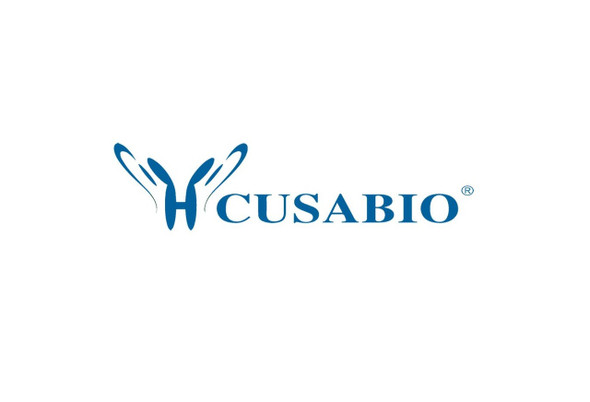Cusabio Active Proteins
Recombinant Mouse Interleukin-36 beta protein (Il36b) (Active) | CSB-AP003111MO
- SKU:
- CSB-AP003111MO
- Availability:
- 5 to 10 Working Days
Description
Recombinant Mouse Interleukin-36 beta protein (Il36b) (Active) | CSB-AP003111MO | Cusabio
Protein Description: Full Length
Alternative Name (s) : Interleukin-1 family member 8,
Gene Names: Il36b,Fil1e,Il1f8
Research Areas: Immunology
Species: Mus musculus (Mouse)
Source: E.Coli
Tag Info: Tag-Free
Expression Region: 1-183aa
Sequence Info: MMAFPPQSCV HVLPPKSIQM WEPNHNTMHG SSQSPRNYRV HDSQQMVWVL TGNTLTAVPA SNNVKPVILS LIACRDTEFQ DVKKGNLVFL GIKNRNLCFC CVEMEGKPTL QLKEVDIMNL YKERKAQKAF LFYHGIEGST SVFQSVLYPG WFIATSSIER QTIILTHQRG KLVNTNFYIE SEK
Biological Activity: Fully biologically active when compared to standard. The specific activity determined by its ability in a functional ELISA. Immobilized rMuIL-36β at 1 µg/mL can bind recombinant murine IL-1 Rrp2 with a range of 0.15-5 µg/mL.
MW: 20.9 kDa
Purity: >95% as determined by SDS-PAGE and HPLC.
Endotoxin: Less than 1.0 EU/µg as determined by LAL method.
Relevance: Cytokine that binds to and signals through the IL1RL2/IL-36R receptor which in turn activates NF-kappa-B and MAPK signaling pathways in target cells linked to a pro-inflammatory response. Part of the IL-36 signaling system that is thought to be present in epithelial barriers and to take part in local inflammatory response; similar to the IL-1 system with which it shares the coreceptor IL1RAP. Stimulates production of interleukin-6 and interleukin-8 in synovial fibrobasts, articular chondrocytes and mature adipocytes. Induces expression of a number of antimicrobial peptides including beta-defensin 4 and beta-defensin 103 as well as a number of matrix metalloproteases (By similarity) . Seems to be involved in skin inflammatory response by acting on keratinocytes, dendritic cells and indirectly on T cells to drive tissue infiltration, cell maturation and cell proliferation. Induces the production of proinflammatory cytokines in bone marrow-derived dendritic cells (BMDCs) , including IL-12, Il-1 beta, IL-6, TNF-alpha and IL-23, and activates p38 MAPK phosphorylation in BMDCs. Involved in dendritic cell maturation by stimulating the surface expression of CD80, CD86 and MHC class II. Induces the production of IFN-gamma, IL-4 and IL-17 by T helper 1 (Th1) cells, cultured CD4 (+) T cells and splenocytes. {ECO:0000250|UniProtKB:Q9NZH7, ECO:0000269|PubMed:21860022, ECO:0000269|PubMed:21965679}.
PubMed ID: 11991723; 16141072; 19717513; 21860022; 21965679
Notes: Repeated freezing and thawing is not recommended. Store working aliquots at 4℃ for up to one week.
Function: Cytokine that binds to and signals through the IL1RL2/IL-36R receptor which in turn activates NF-kappa-B and MAPK signaling pathways in target cells linked to a pro-inflammatory response. Part of the IL-36 signaling system that is thought to be present in epithelial barriers and to take part in local inflammatory response; similar to the IL-1 system with which it shares the coreceptor IL1RAP. Stimulates production of interleukin-6 and interleukin-8 in synovial fibrobasts, articular chondrocytes and mature adipocytes. Induces expression of a number of antimicrobial peptides including beta-defensin 4 and beta-defensin 103 as well as a number of matrix metalloproteases (By similarity) . Seems to be involved in skin inflammatory response by acting on keratinocytes, dendritic cells and indirectly on T-cells to drive tissue infiltration, cell maturation and cell proliferation. Induces the production of proinflammatory cytokines in bone marrow-derived dendritic cells (BMDCs) , including IL-12, Il-1 beta, IL-6, TNF-alpha and IL-23, and activates p38 MAPK phosphorylation in BMDCs. Involved in dendritic cell maturation by stimulating the surface expression of CD80, CD86 and MHC class II. Induces the production of IFN-gamma, IL-4 and IL-17 by T-helper 1 (Th1) cells, cultured CD4 (+) T-cells and splenocytes.
Involvement in disease:
Subcellular Location: Secreted
Protein Families: IL-1 family
Tissue Specificity:
Paythway:
Form: Lyophilized powder
Buffer: Lyophilized from a 0.2 µm filtered 20 mM Tris, 300 mM NaCl, pH 8.0, 5 % trehalose
Reconstitution: We recommend that this vial be briefly centrifuged prior to opening to bring the contents to the bottom. Please reconstitute protein in deionized sterile water to a concentration of 0.1-1.0 mg/mL.We recommend to add 5-50% of glycerol (final concentration) and aliquot for long-term storage at -20℃/-80℃. Our default final concentration of glycerol is 50%. Customers could use it as reference.
Uniprot ID: Q9D6Z6
Uniprot Entry Name: IL36B_MOUSE
HGNC Database Link: N/A
UniGene Database Link: UniGene
KEGG Database Link: KEGG
STRING Database Link: STRING
OMIM Database Link: N/A









